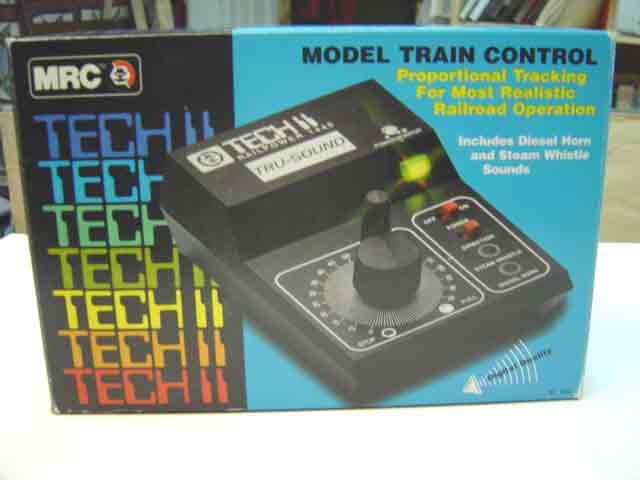The accompanying picture shows the box from one of the builder's HO train controllers, a Model Rectifier Corporation (MRC) Tech II Railpower 1440 Tru-Sound Integrated Controller. Although this excellent controller is more than capable of managing the entire layout, it is being put to an auxiliary use at this time. We are going to use the Hornby R965 Standard Train Controller to provide the 12-volt variable DC traction current, and the MRC controller to provide power for the accessories, such as point motors and lights.
--more--

The builder does not insist upon this practice of separating the powers, but he does recommend such a separation to any builder who happens to possess extra low-voltage power sources.
Go to top of page